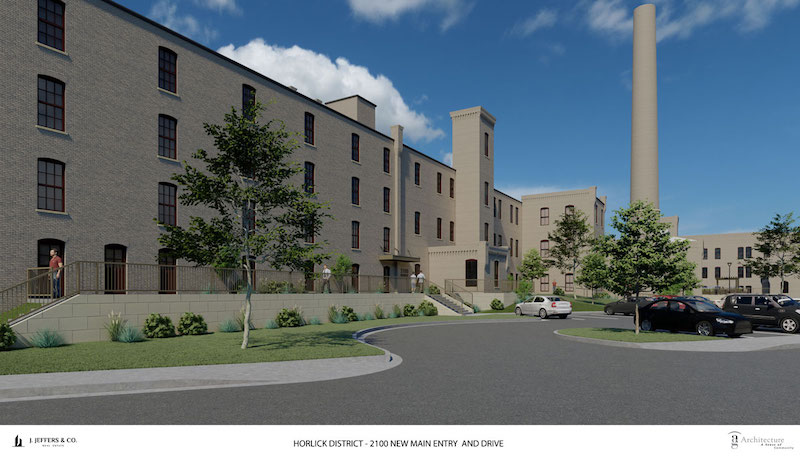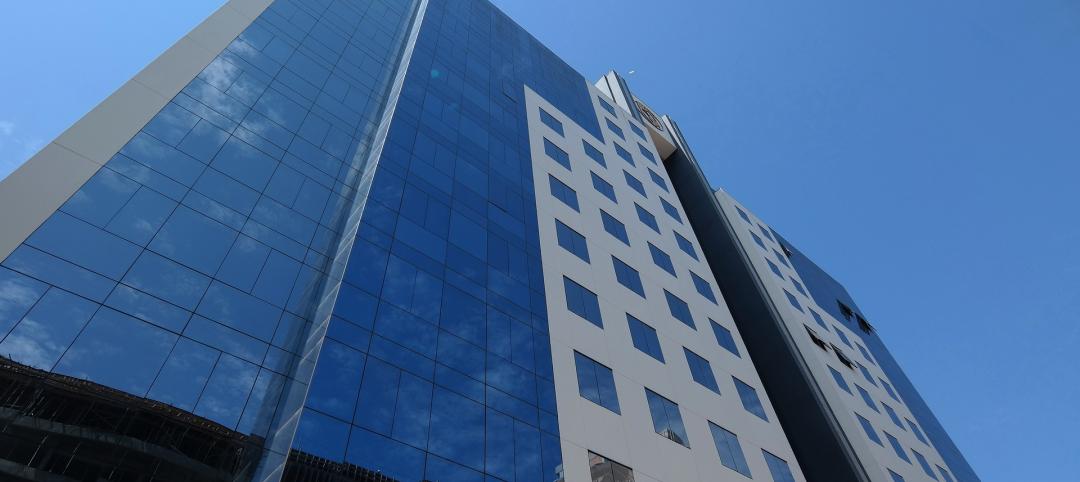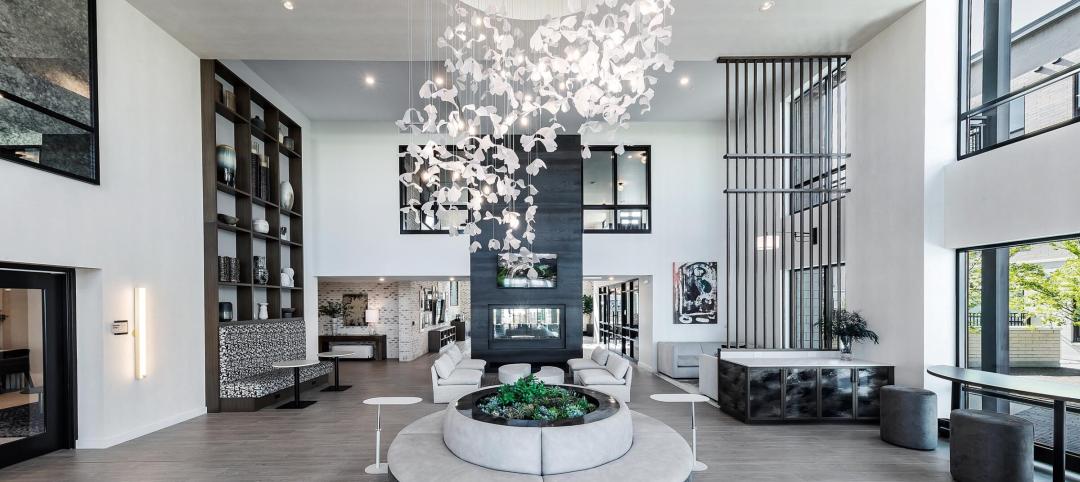Building Teams that include developer J Jeffers & Company and the general contractor CG Schmidt have three adaptive reuse projects underway in Wisconsin that attest to the unique challenges this kind of work presents, especially when historic preservation is a factor.
Scheduled for completion in July is the $40 million Phase 1 reconstruction of the Horlick Malted Milk factory complex in Racine dating back to 1875. This project’s Building Team—which also includes AG Architecture, JSD Engineering, and the historical consultant Heritage Consulting—is converting the northern building for 76 market-rate housing units. That building is being rebranded as Headquarters at Horlick. The southern building, renamed Horlick Flats, will have a mix of 60 market-rate and affordable apartments, managed in partnership with Lutheran Social Services.
Phase 1 will build out the infrastructure of this 13-acre complex, on which J Jeffers owns nine of 14 buildings and has contracts on the rest.
In Milwaukee, J Jeffers and CG Schmidt are working with Eppstein Uhen Architects and structural engineer Spire Engineering to adapt two buildings once home to the Milwaukee Journal Sentinel newspaper. (J Jeffers acquired the downtown block where the Journal Communications buildings sit for an undisclosed price in 2019.)
One conversion is a $27 million reconstruction, scheduled for completion in August, that is reimaging a 115,000-sf building originally completed in 1962 for student housing for Milwaukee Area Technical College (MATC). About one-third of the college’s 30,000 students had incomes last year low enough to qualify for financial aid, and the converted building will set aside 27 studio apartments for students earning less than 60% of the area’s median average. The building will also have two- and four-bedroom units, totaling 217 beds.
The other former Journal building under reconstruction, 256,000 sf and originally completed in 1924, will house 103 apartments. The first floor will contain the main lobby and amenity areas. The building’s original multi-story press room will be converted into an 8,800-sf restaurant and brew pub, and underground parking will be in the lower half of the former press room. The residential mix will consist of studio, one-, two-, and three-bedroom apartments as well as street-accessed walk-ups. This $55.7 million project is scheduled for completion in June 2022.
HISTORY PRESERVED, WHERE POSSIBLE
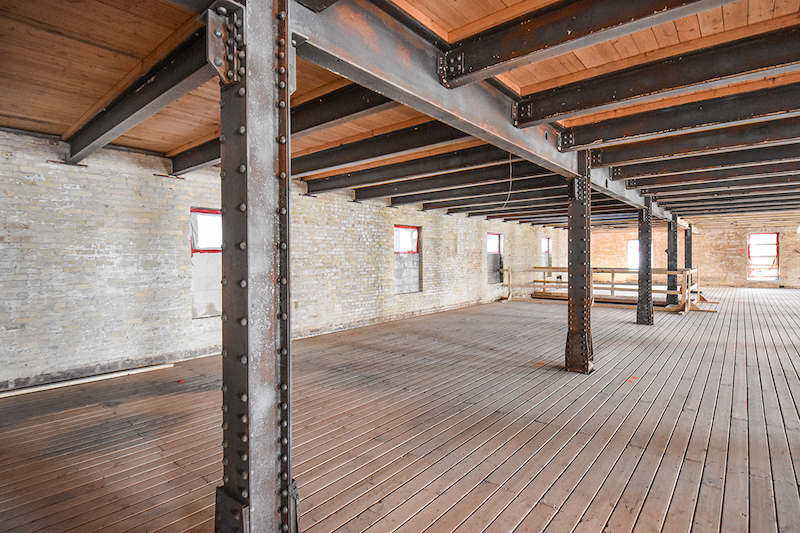
Horlick's tongue-and-groove floors and steel girds are being preserved in this building's reconstruction. Image: J Jeffers & Company
J Jeffers is defraying $100 million of the total cost of these three projects with assistance from federal and state historic tax credits.
Each project has its own set of design and construction criteria. The Horlick factory complex, which is on the National Register of Historical Places, had been abandoned for 45 years, and was so dilapidated the contractors couldn’t even do walkthroughs. While the Building Team razed and removed much of its nonhistorical components, Horlick’s thick exterior masonry walls and structural steel remain. Other architectural elements, such as restored Cream City brick, exposed tongue-and-groove wood flooring, ornate original support columns and steel girders incorporating old school hand-pounded rivets, are being preserved whenever possible.
BRINGING LIGHT TO DARK FLOOR SPACES
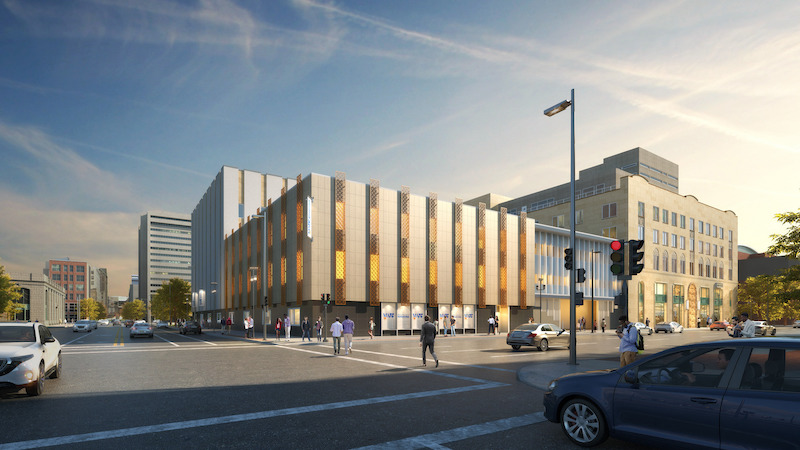
A former Milwaukee Journal-Sentinal building is being converted to student housing for Milwaukee Area Technical College. It will share underground parking with an adjacent Journal-Sentinal buiding that is being converted to residential apartments. Images: Courtesy CG Schmidt
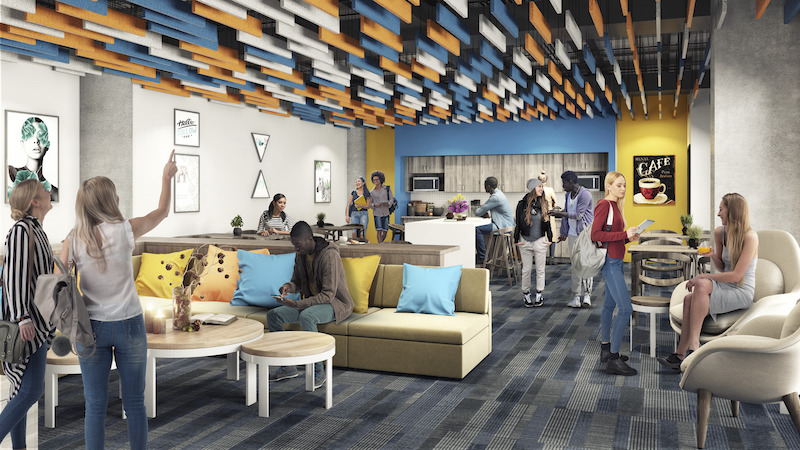 The adaptive reuses in Milwaukee are different stories. Each has floor plates that range from 30,000 to 35,000 sf, which meant that much of the interior space within the buildings had no access to natural light, which is essential to modern residential design. But preservation requirements also protected the buildings’ historic façade.
The adaptive reuses in Milwaukee are different stories. Each has floor plates that range from 30,000 to 35,000 sf, which meant that much of the interior space within the buildings had no access to natural light, which is essential to modern residential design. But preservation requirements also protected the buildings’ historic façade.
To bring light into these spaces, the Building Team created light wells lined with windows in the center of the buildings rather than expanding existing windows or creating new ones.
Each of the Journal buildings includes multi-story, open volume press rooms where newspapers had been printed. Since these rooms are considered part of the buildings’ historic significance, they must be generally preserved while also being repurposed for modern use. Over 160 parking spaces totaling 90,000 sf will be provided in the lower levels of the two adjoining buildings. To achieve this, CG Schmidt and Spire Engineering had to negotiate limited 14-ft clearance within that space to use heavy equipment. Underground concrete parking decks and the new parking garage ramp also required a custom-engineered shoring system to ensure structural integrity.
Additional amenities aimed at enhancing the MATC student-life experience include a computer lab and academic support facilities, as well as one of the hallmarks of the project: converting the cavernous press room area into a regulation-sized basketball court and fitness complex.
Related Stories
Urban Planning | Feb 5, 2024
Lessons learned from 70 years of building cities
As Sasaki looks back on 70 years of practice, we’re also looking to the future of cities. While we can’t predict what will be, we do know the needs of cities are as diverse as their scale, climate, economy, governance, and culture.
Adaptive Reuse | Feb 4, 2024
Corporate modernist buildings increasingly popular fodder for adaptive reuse projects
Beginning in the 1970s adaptive reuse projects transformed 19th and early 20th Century buildings into distinctive retail destinations. Increasingly, developers of adaptive reuse projects are targeting outmoded corporate buildings of the 1950s to 1980s.
Luxury Residential | Jan 30, 2024
Lumen Fox Valley mall-to-apartments conversion completes interiors
Architecture and interior design firm Morgante Wilson Architects (MWA) today released photos of its completed interiors work at Lumen Fox Valley, a 304-unit luxury rental community and mall-to-apartments conversion.
Senior Living Design | Jan 24, 2024
Former Walgreens becomes affordable senior living community
Evergreen Real Estate Group has announced the completion of Bellwood Senior Apartments. The 80-unit senior living community at 542 25th Ave. in Bellwood, Ill., provides independent living options for low-income seniors.
Adaptive Reuse | Jan 23, 2024
Adaptive reuse report shows 55K impact of office-to-residential conversions
The latest RentCafe annual Adaptive Reuse report shows that there are 55,300 office-to-residential units in the pipeline as of 2024—four times as much compared to 2021.
Adaptive Reuse | Jan 18, 2024
Coca-Cola packaging warehouse transformed into mixed-use complex
The 250,000-sf structure is located along a now defunct railroad line that forms the footprint for the city’s multi-phase Beltline pedestrian/bike path that will eventually loop around the city.
Adaptive Reuse | Jan 12, 2024
Office-to-residential conversions put pressure on curbside management and parking
With many office and commercial buildings being converted to residential use, two important issues—curbside management and parking—are sometimes not given their due attention. Cities need to assess how vehicle storage, bike and bus lanes, and drop-off zones in front of buildings may need to change because of office-to-residential conversions.
K-12 Schools | Jan 8, 2024
Video: Learn how DLR Group converted two big-box stores into an early education center
Learn how the North Kansas City (Mo.) School District and DLR Group adapted two big-box stores into a 115,000-sf early education center offering services for children with special needs.
Affordable Housing | Dec 14, 2023
What's next for affordable housing in 2024?
As 2023 draws to a close, GBBN’s Mary Jo Minerich and Amanda Markovic, AIA sat down to talk about the future. What’s next in terms of trends, technology, and construction of affordable housing?
MFPRO+ News | Nov 21, 2023
Underused strip malls offer great potential for conversions to residential use
Replacing moribund strip malls with multifamily housing could make a notable dent in the housing shortage and revitalize under-used properties across the country, according to a report from housing nonprofit Enterprise Community Partners.


